Southern Magnolia
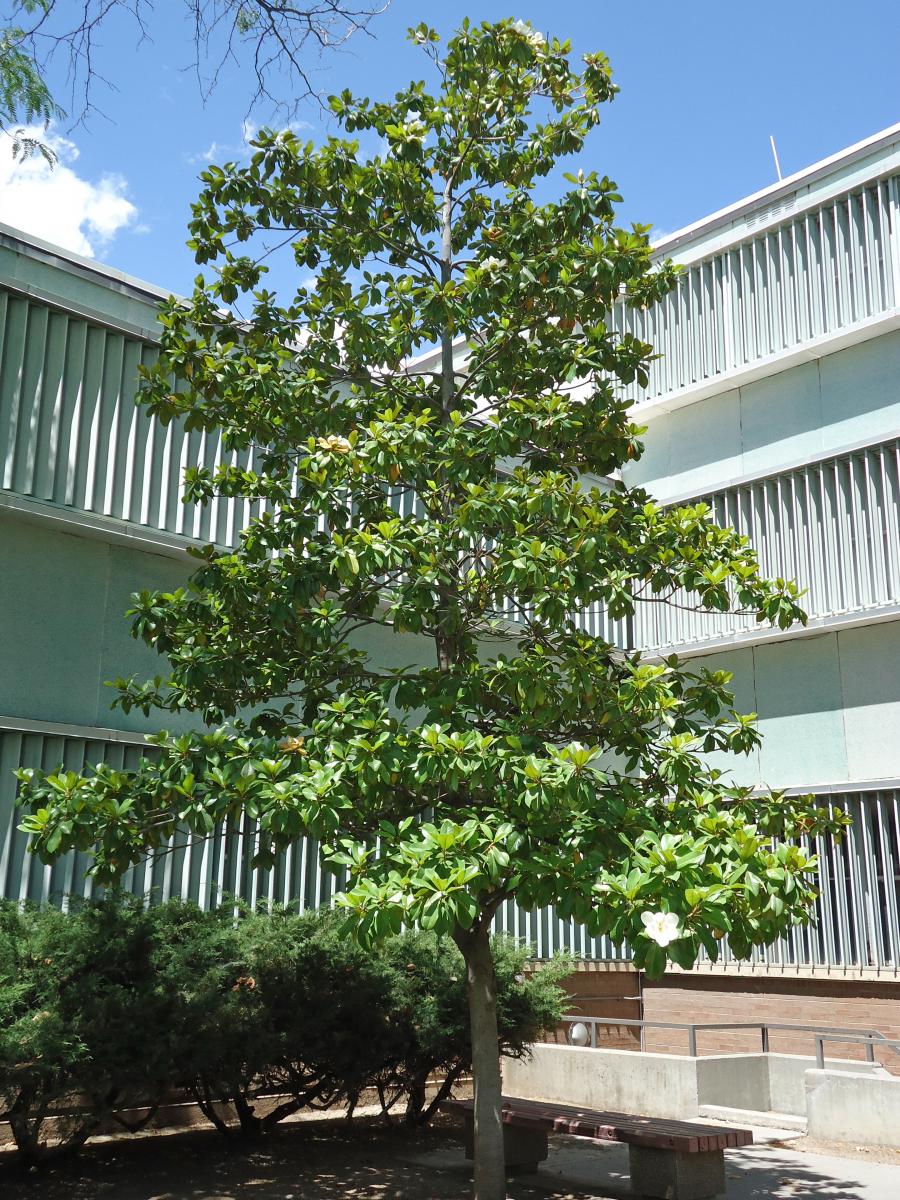
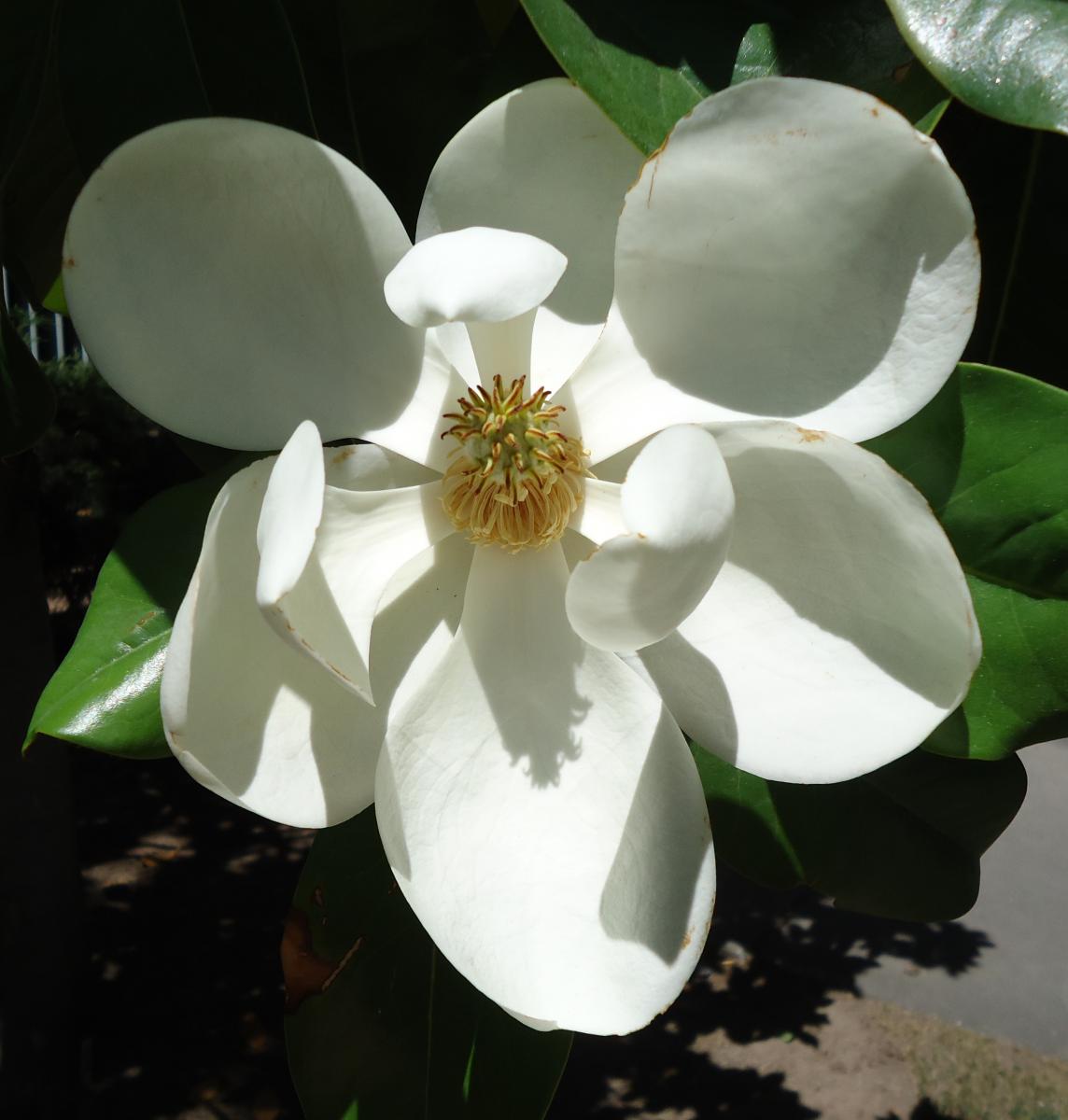
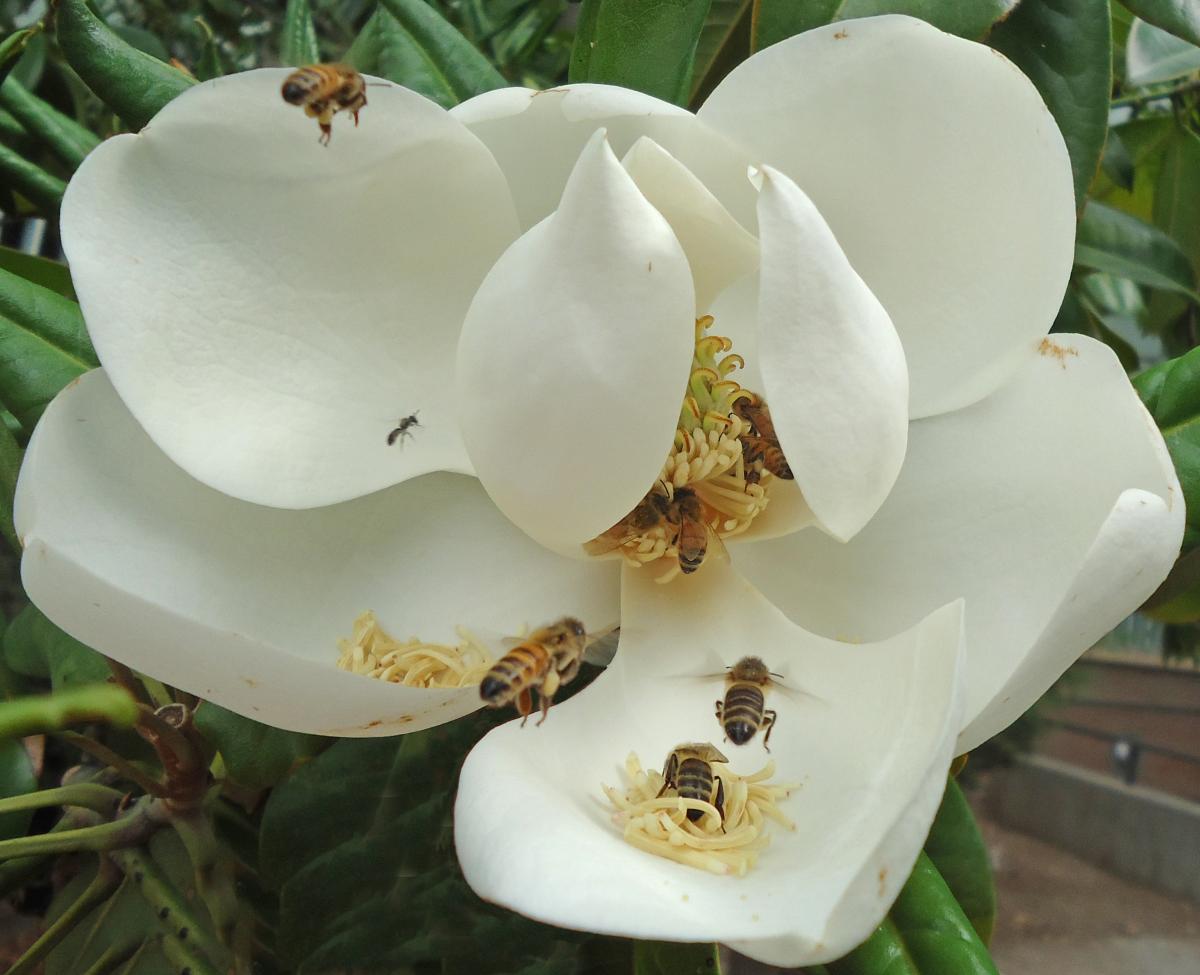


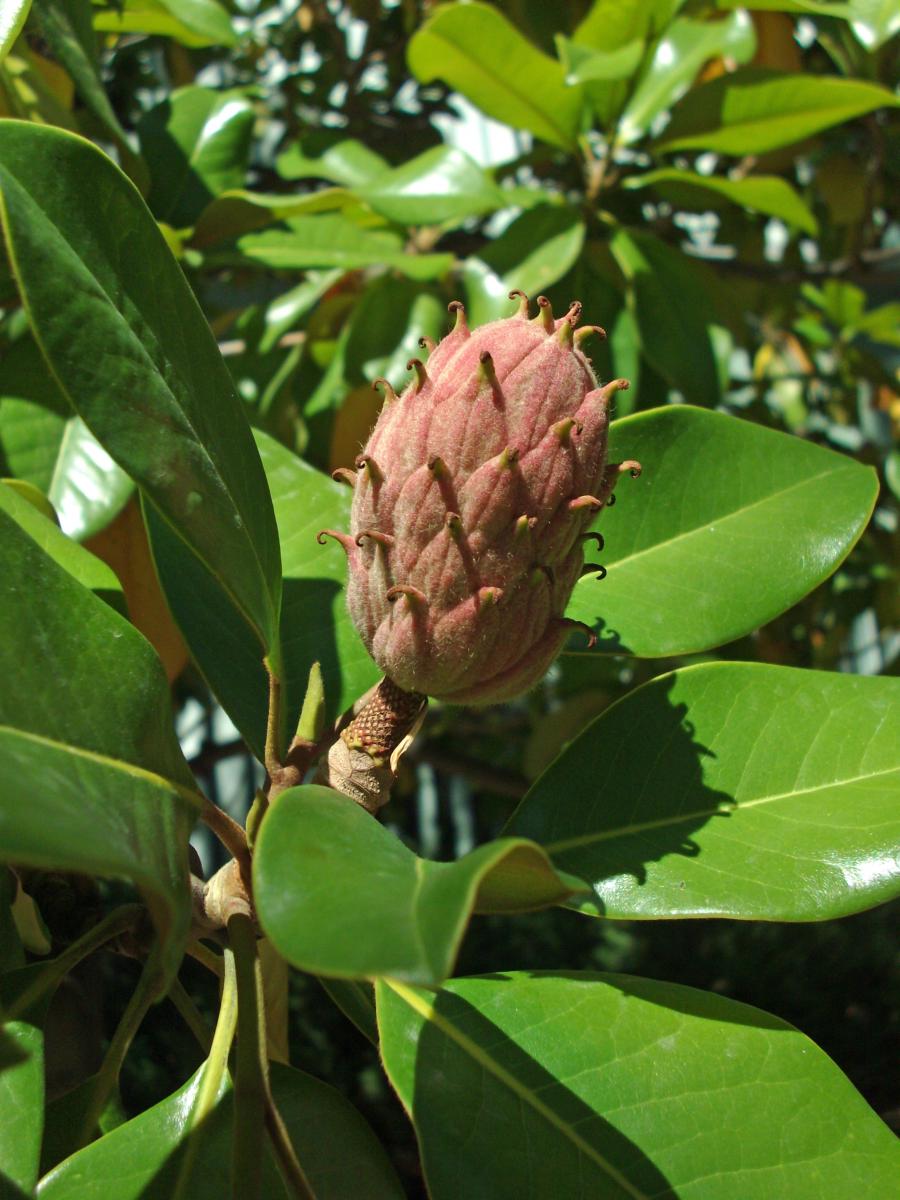

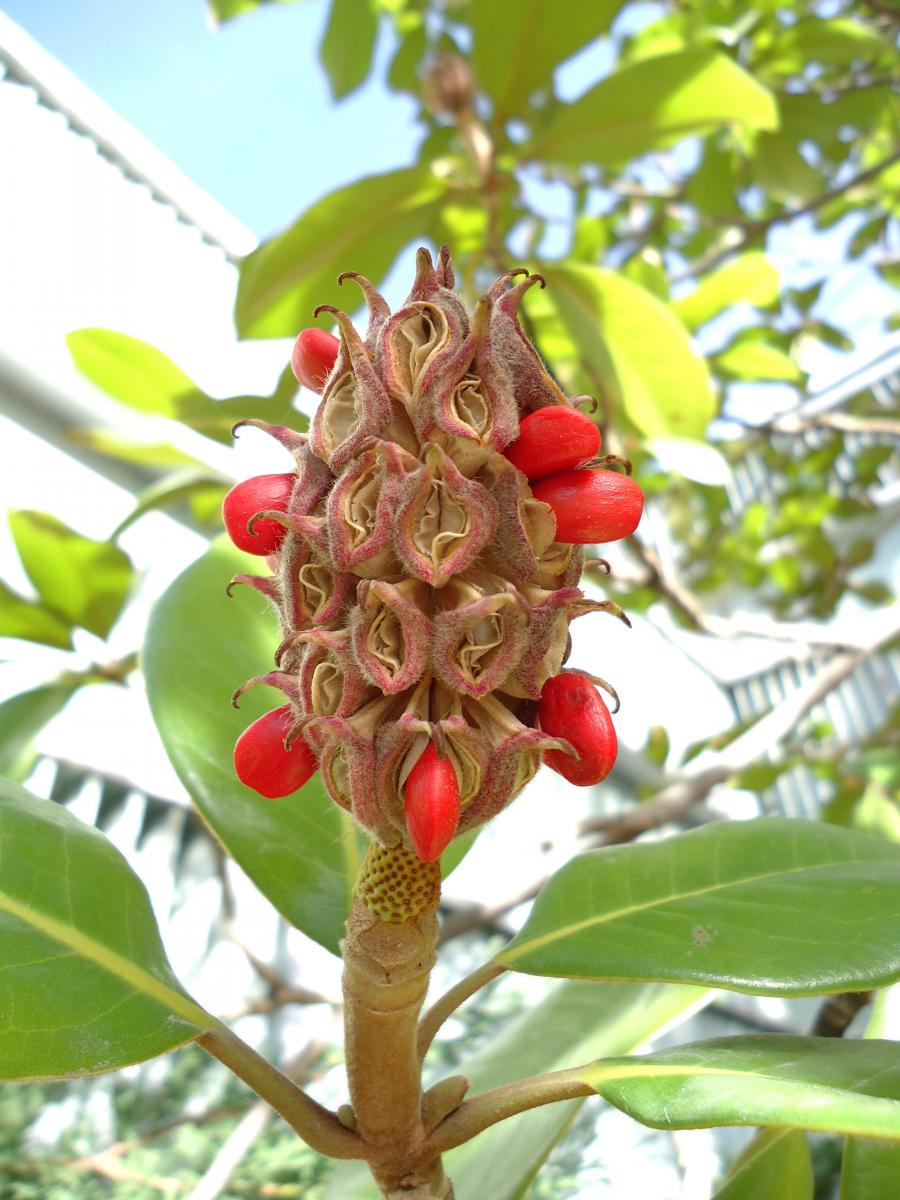
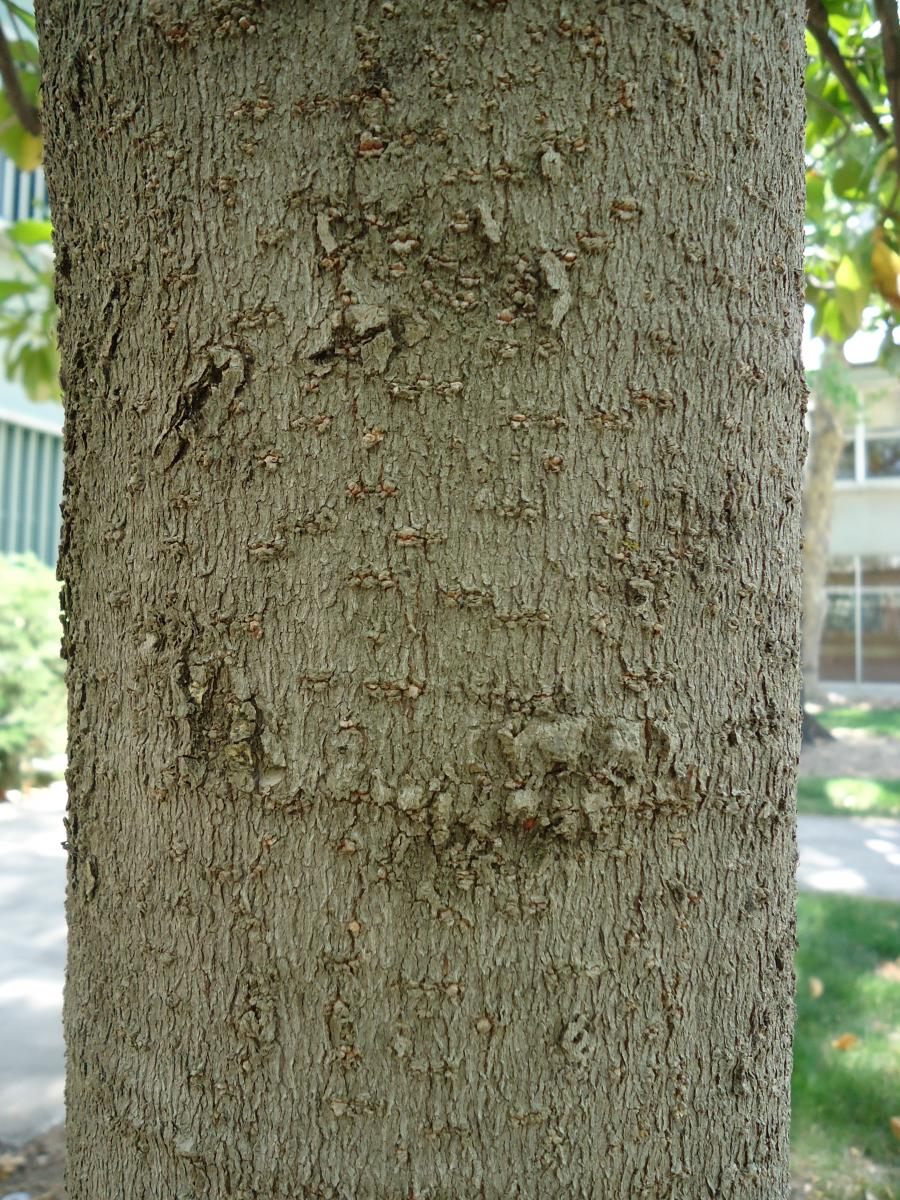
Magnolia grandiflora
Leaves: Broadleaf evergreen. The leaves are broadly oval in shape, 5 to 8 inches long, 2 to 5 inches wide with smooth leaf edges and a pointed tip. They are lustrous dark green in color, stiff, and leathery. Leaves often have a scurfy underneath with yellow-brown/rusty fuzz. The leaves have a shiny, waxy coating that makes that makes them resistant to damage from salt and air pollution.
Bark/Twigs: Smooth gray bark. Older trees may develop large scaly plates.
Flowers/Fruit: The large, showy, fragrant, citronella-scented flowers are creamy white, 8 to 12 inches across, with 6 to 12 petals with a waxy texture. Each petal is thick, concave, broadly ovate and 4 to 6 inches long. They emerge from the tips of twigs on mature trees in late spring (May-June). Flowering is followed by a rose-colored fruit, ovoid shape, 3 to 4 inches long and 1½ to 2 inches wide. The cone-like fruit split open to expose red seeds in fall (Sept to Oct).
Mature size and shape: Large. 50 to 60 feet high x 30 feet wide. Columnar-pyramidal shape, low branching.
General information/special features: Usually not hardy to Utah. Plant in full sun to partial shade. Well-drained, rich, moist, acidic soil is best. Tolerates high soil moisture. It is natively found on the edges of bodies of water and swamps. The timber is hard and heavy, and has been used commercially to make furniture, pallets, and veneer.
Landscape use and maintenance: Unique shade tree. Slow to medium growing rate. High maintenance. Leaves never completely decompose and can be messy, dropping in the spring and fall. Trees will go into shock and drop interior leaves when transplanted. Best transplanted in August. The foliage will bronze, blotch, and burn in severe winters at the northern limits of cultivation, especially when grown in full winter sun. Once established plants are drought tolerant, and the most drought tolerant of all the magnolia species.
USDA Hardiness Zone: 7 to 10
Family/Origin: Magnoliaceae – Magnolia. Native to the extreme southeastern U.S. from southeast Texas to eastern North Carolina.
Campus Use: Rare. Only specimen. Can be found in lawn area north of Performing Arts (Bld 17).
